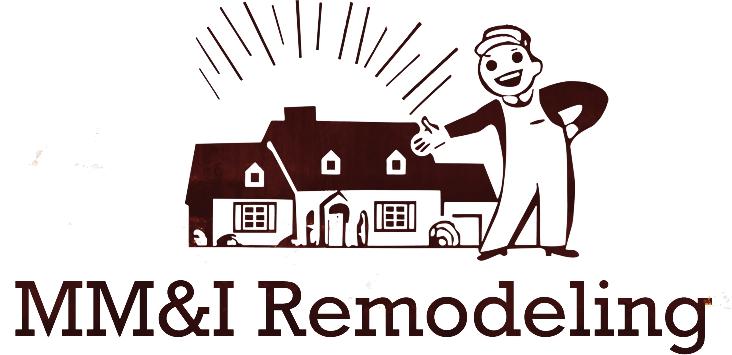Permitting Process for Home Renovations: Navigating Legal Requirements and Procedures
****We would like to thank Mary Aspen Richardson and her talented content writing team for the following article***
Featured Image
Alt-tag: A close-up photo of a wooden gavel.
The path to a successful renovation often includes various legal requirements and procedures. Understanding and navigating the permitting process is crucial to ensuring your project runs smoothly and complies with local regulations. So, let our comprehensive guide walk you through the key aspects of securing permits for home renovations, making the journey less daunting and more manageable.
Understanding the Importance of Permits
Permits are essential for ensuring your renovation project adheres to local building codes and safety standards. They help prevent potential issues that could arise from substandard construction, such as structural failures, fire hazards, or other safety concerns. Additionally, having the proper permits can protect you from legal liabilities and future complications when selling your home.
Identifying the Scope of Your Project
Before proceeding with the permitting process, it’s important to clearly define the scope of your renovation project. Different types of renovations may require different permits. For instance, adding a new room, remodeling a kitchen, or making structural changes typically require more extensive permits than minor cosmetic updates like painting or flooring. Understanding the extent of your project will help you determine which permits are necessary.
Alt-tag: A person holding a black pen while working on a project.
Caption: Make sure to identify the scope of your project before diving into legal requirements and procedures.
Researching Local Building Codes and Regulations
Building codes and regulations vary significantly from one location to another. Your first step
should be to familiarize yourself with the specific requirements of your local municipality. Most
local government websites provide detailed information on building codes, zoning laws, and
permit requirements. You can also visit your local building department or planning office for
guidance.
Consulting with Professionals
Don’t hesitate to seek professional help during the permitting process. Architects, contractors, or
builders are well-versed in local building codes and can guide you through the complexities of
obtaining the necessary permits. Their expertise can ensure that your renovation plans meet all
legal requirements, potentially saving you time and money in the long run.
Preparing Your Permit Application
Once you have a clear understanding of the permits you need, the next step is to prepare your
permit application. This process typically involves submitting detailed plans and specifications
of your renovation project. Your application should include drawings, blueprints, and other
relevant documents that clearly outline the scope of work. Be thorough and precise in your
documentation to avoid delays in the approval process.
Alt-tag: A person signing an application.
Caption: Your application should include drawings, blueprints, and other relevant documents that clearly outline the scope of work.
Submitting Your Application
After preparing your application, you’ll need to submit it to your local building department.
Some municipalities offer online submission options, while others may require you to submit
your application in person. Be sure to check the specific submission procedures for your area.
Upon submission, you may need to pay a permit fee, which varies depending on the type and
scale of your project.
The Review Process
Once your application is submitted, it undergoes a review process by local building officials.
During this phase, officials will examine your plans to ensure they comply with all relevant
building codes and zoning regulations. The review process can take anywhere from a few days to
several weeks, depending on your project’s complexity and the building department’s workload.
Addressing Feedback and Revisions
It’s not uncommon for building officials to request revisions or additional information during the
review process. If this happens, don’t be discouraged. Address the feedback promptly and make any necessary adjustments to your plans. Resubmitting revised documents can extend the review period, so it’s important to be as accurate and detailed as possible in your initial submission.
Receiving Your Permit
Once your application is approved, you’ll receive your building permit. This permit authorizes
you to proceed with your renovation project. Make sure to display the license prominently at
your worksite, as inspectors may need to verify it during their visits. The permit will also outline
any specific conditions or requirements that must be met during construction.
Inspections and Compliance
Throughout the renovation, your project will be subject to various inspections to ensure
compliance with building codes and permit conditions. Inspections typically occur at different
stages of construction, such as foundation, framing, electrical, and plumbing. It’s crucial to
schedule these inspections as required and address any issues the inspector identifies. Failing to
comply with inspection requirements can result in project delays or additional costs.
Alt-tag: Person in a yellow safety vest holding inspection notes and a pen.
Caption: Your project will be subject to various inspections to ensure compliance with building codes and permit conditions.
Completing Your Project and Final Inspection
After the construction work is completed, a final inspection is required to ensure that all work
has been done in accordance with the approved plans and building codes. If the inspector finds
everything in order, you’ll receive a final approval or occupancy certificate indicating that your
renovation is complete and compliant. Once you obtain the certificate, all that is left is to find
reliable movers and streamline your relocation process. You can use a website such as USA Moving Reviews to help you find the best moving company for your needs. They will provide you with a detailed analysis of other people’s experiences and referrals, making your search more convenient and less time-consuming.
Handling Unpermitted Work
If you discover that previous renovations were done without the necessary permits, it’s important
to address this issue promptly. Unpermitted work can pose safety risks and legal complications.
You may need to apply for retroactive permits, which involve submitting plans and undergoing
inspections for the unpermitted work. While this can be a complex process, it’s essential for ensuring the safety and legality of your home.
Maintaining Documentation
Remember, keeping all permit-related documentation, including application forms, plans, inspection reports, and final approvals, in a safe and accessible place is not just a formality. It’s a smart move. This paperwork is not only important for future reference but can also be valuable if you decide to sell your home. Prospective buyers often require proof that renovations were done legally and according to code.
Common Challenges and How to Overcome Them
Navigating the permitting process can present several challenges, from understanding complex regulations to managing unexpected delays. One common issue is the variance in permit requirements between different municipalities. It’s important to research local rules and seek professional advice when needed. Another challenge is dealing with revisions and resubmissions during the review process. Being meticulous in your initial application can minimize these issues. Finally, managing inspections and ensuring compliance can be daunting, but staying organized and proactive can help streamline the process.
Conclusion: Embracing Legal Requirements and Procedures
While the permitting process for home renovations can be complex and time-consuming, it is a crucial step in ensuring that your project is safe, legal, and up to code. By understanding the legal requirements and procedures, preparing thoroughly, and seeking professional assistance, you can confidently navigate this process. Embrace the permitting journey as an integral part of your renovation project, knowing that it ultimately contributes to the quality and safety of your home.
Meta Description:
Our legal requirements and procedures guide will help you navigate home renovation and ensure your
project complies with regulations.
Keyword:
legal requirements and procedures
Photos used:
https://www.pexels.com/photo/close-up-photo-of-wooden-gavel-5668473/
https://www.pexels.com/photo/person-holding-black-pen-1109541/
https://www.pexels.com/photo/person-holding-gray-twist-pen-and-white-printer-paper-on-brown-
wooden-table-955389/
https://www.pexels.com/photo/person-in-yellow-reflective-safety-vest-holding-a-pen-and-checklist-of-
house-inspection-8293680/






